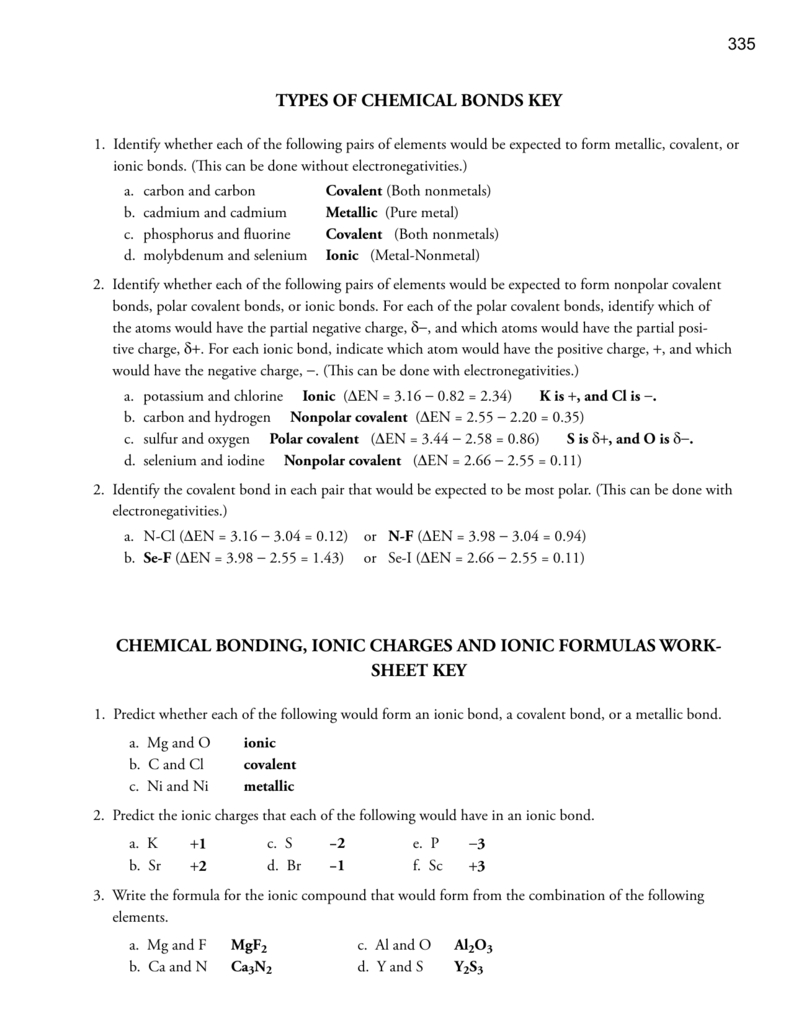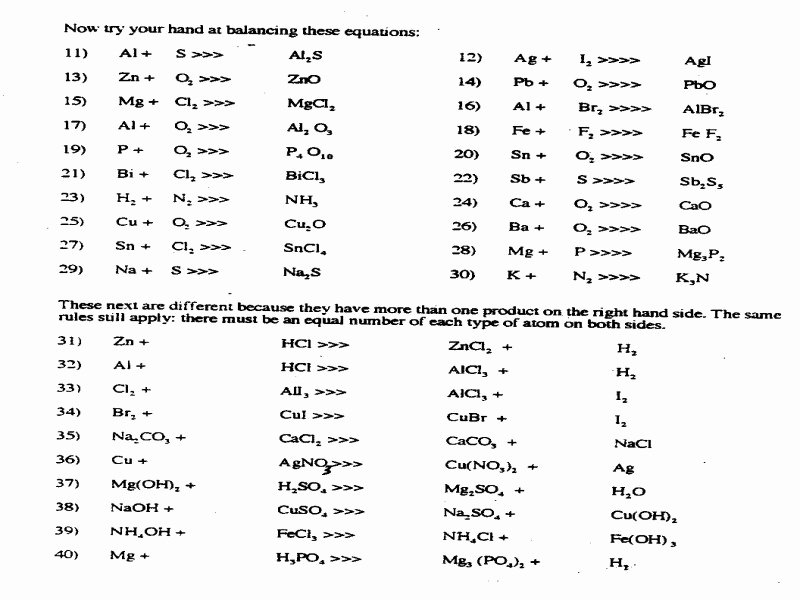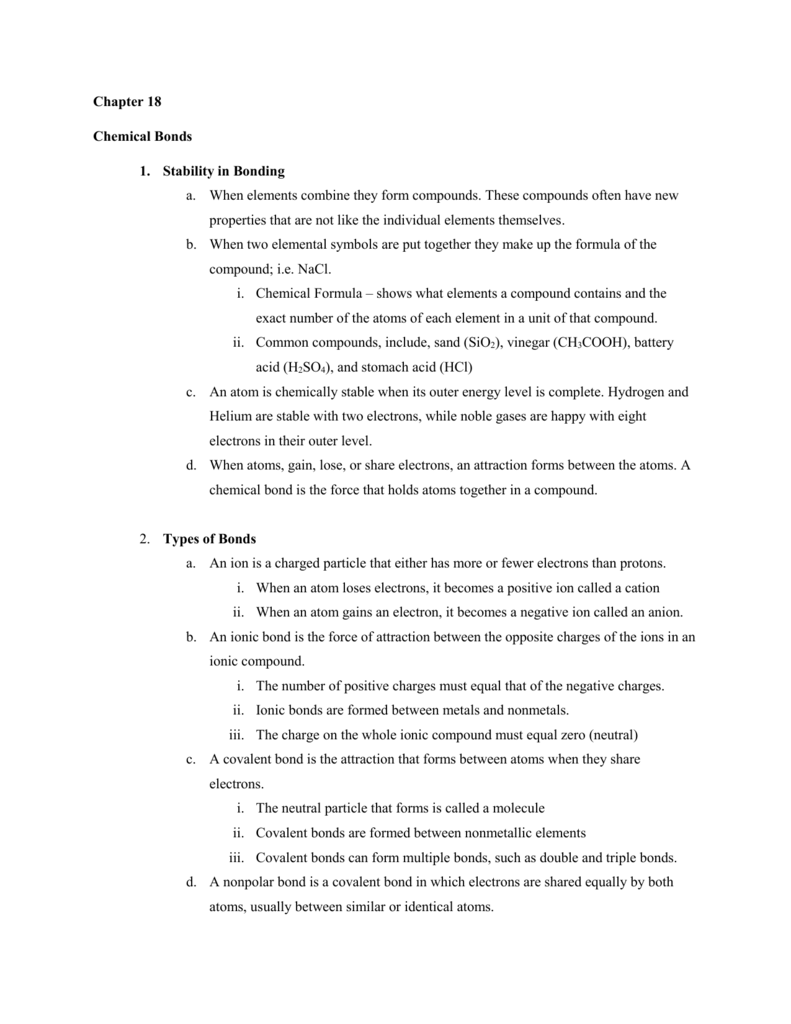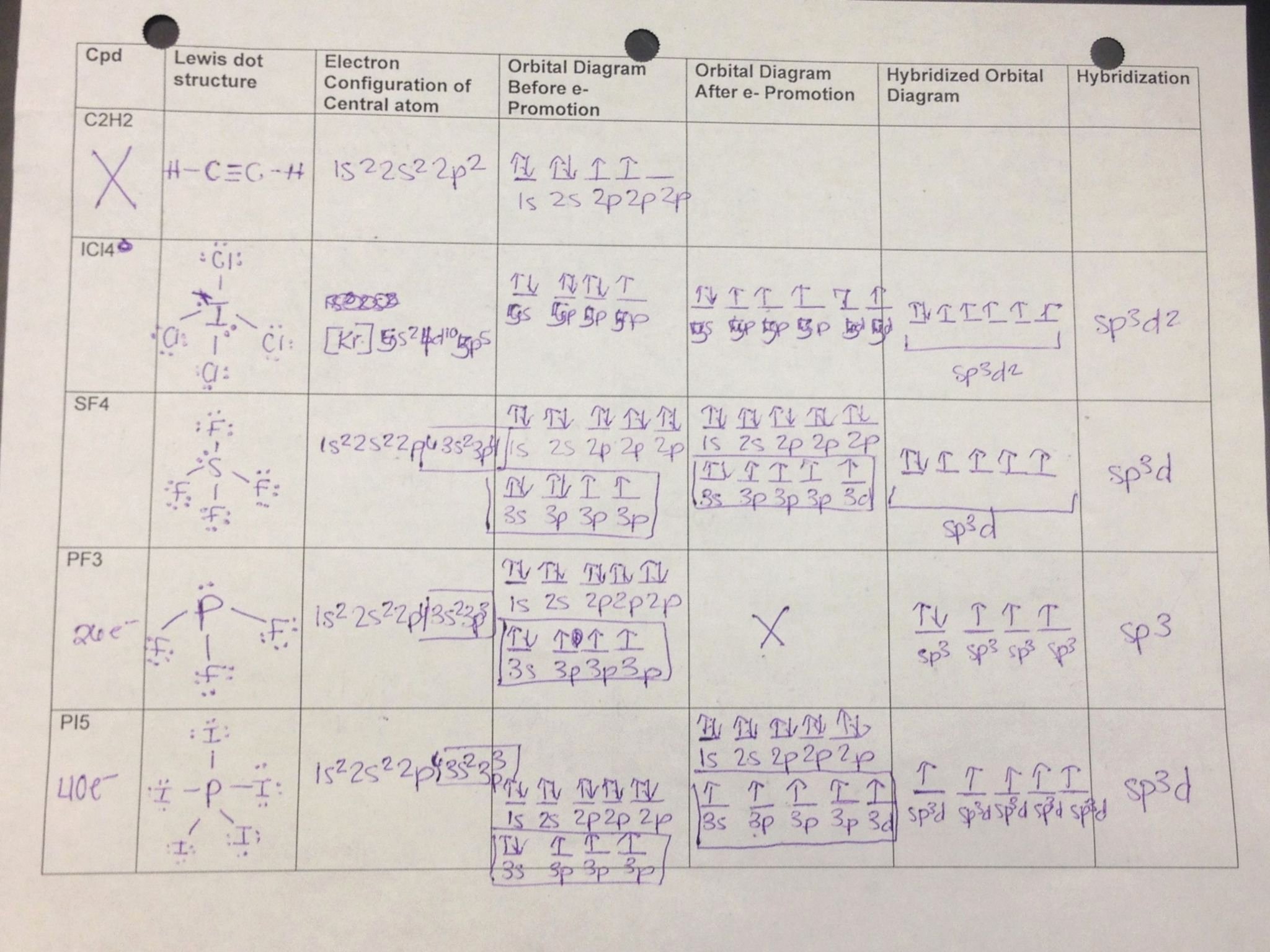Chapter 18 Chemical Bonds Answer Key
Chapter 18 Chemical Bonds Answer Key - Bond energies and the enthalpy of reactions. Web study with quizlet and memorize flashcards containing terms like how does a compound differ from its component elements?, what does a chemical formula represent?, how do electron dot diagrams help predict chemical bonding?. Click the card to flip 👆. A chemical bond created by the sharing of electrons ductility: Charged particle that has either more of fewer electrons than protons. Web 330 chapter 18 chemical bonds writing formulasyou have learned how to find oxidation numbers and their least common multiples. A charge particle ionic bond: The ability to be drawn into wire electronegativity: Web recognize stable electron configurations. Find other quizzes for science and more on quizizz for free!
Web study with quizlet and memorize flashcards containing terms like how does a compound differ from its component elements?, what does a chemical formula represent?, how do electron dot diagrams help predict chemical bonding?. Web a molecule with strong bonds generally has less tendency to undergo chemical change than does one with weak bonds. A chemical bond created by the sharing of electrons ductility: Web chapter 18 chemical bonds review quiz for 9th grade students. A charge particle ionic bond: Find other quizzes for science and more on quizizz for free! Web chapter 18 section 2: Without it, scientists wouldn't be able to explain why atoms are attracted to each other or how products are formed after a chemical. Web ion a positively charged or negatively charged particle ionic bond a chemical bond between oppositely charged ions covalent bond a bond formed from shared electrons hydrate a crystalline substance that. The presence of three strong bonds makes n 2 a very stable molecule.
Without it, scientists wouldn't be able to explain why atoms are attracted to each other or how products are formed after a chemical. A charge particle ionic bond: Covalent bonds, polar covalent bonds and ionic bonds. A chemical bond created by the sharing of electrons ductility: 7.1 the nature of chemical reactions by. Web physical science chapter 18: Click the card to flip 👆. Web chapter 18 chemical bonds review quiz for 9th grade students. Web chapter 18 chemical bonds teaching resources | teachers pay teachers results for chapter 18 chemical bonds 18 results sort: Web in the n 2 molecule, the nitrogen atoms have an σ bond and two π bonds holding the two atoms together.
And Potential Energy Worksheet Answers 9Th Grade Live
Find other quizzes for science and more on quizizz for free! Click the card to flip 👆. Click the card to flip 👆. The presence of three strong bonds makes n 2 a very stable molecule. Web ion a positively charged or negatively charged particle ionic bond a chemical bond between oppositely charged ions covalent bond a bond formed from.
30 Overview Chemical Bonds Worksheet Answers Education Template
Click the card to flip 👆. Web chapter 18 chemical bonds review quiz for 9th grade students. There are three types of bonds: 7.1 the nature of chemical reactions by. Shows what elements a compounds contains and the exact number of the atoms of each element in a unit of that compound.
Types Of Chemical Bonds Worksheet Answers
Web recognize stable electron configurations. Covalent bonds, polar covalent bonds and ionic bonds. • distinction between elements and compounds; The ability to be drawn into wire electronegativity: Web chapter 18 chemical bonds teaching resources | teachers pay teachers results for chapter 18 chemical bonds 18 results sort:
Atomic Structure And Chemical Bonds Worksheet Answer Key
Web in the n 2 molecule, the nitrogen atoms have an σ bond and two π bonds holding the two atoms together. Web physical science chapter 18: Without it, scientists wouldn't be able to explain why atoms are attracted to each other or how products are formed after a chemical. Compound names, element names, number and ratio of atoms •.
Chapter 6 Chemical Bonds
Click the card to flip 👆. Now you can write formulas for ionic compounds. An ion is a _____ particle that has either more or fewer electrons than protons. A _____ is the force of attraction between the opposite charges of the ions in an ionic compound. Find other quizzes for science and more on quizizz for free!
50 Chemical Bonding Worksheet Key Chessmuseum Template Library
A charge particle ionic bond: Web study with quizlet and memorize flashcards containing terms like how does a compound differ from its component elements?, what does a chemical formula represent?, how do electron dot diagrams help predict chemical bonding?. An atom’s ability to attract electrons ion: Web physical science chapter 18: Bond energies and the enthalpy of reactions.
Student Exploration Ionic Bonds Answer Key Quizlet / Ionic Bonds Gizmo
Web chapter 18 chemical bonds review quiz for 9th grade students. The simplest example of bonding. Charged particle that has either more of fewer electrons than protons. What is the formula for. Oxidation numbers are written as ______.
30 Overview Chemical Bonds Worksheet Answers Education Template
Click the card to flip 👆. The presence of three strong bonds makes n 2 a very stable molecule. A _____ is the force of attraction between the opposite charges of the ions in an ionic compound. Charged particle that has either more of fewer electrons than protons. The simplest example of bonding.
Section 1 Stability In Bonding Worksheet Answers Ivuyteq
Same elements may form different compounds • reading chemical formulas: Shows what elements a compounds contains and the exact number of the atoms of each element in a unit of that compound. Bond energies and the enthalpy of reactions. Find other quizzes for science and more on quizizz for free! Now you can write formulas for ionic compounds.
50 Overview Chemical Bonds Worksheet Answers Chessmuseum Template Library
7.1 the nature of chemical reactions by. Covalent bonds, polar covalent bonds and ionic bonds. Same elements may form different compounds • reading chemical formulas: Web a molecule with strong bonds generally has less tendency to undergo chemical change than does one with weak bonds. What is the formula for.
Compound Names, Element Names, Number And Ratio Of Atoms • Chemical Bonds Between Atoms Involve Electrons • Ionic Bonds…
Web 330 chapter 18 chemical bonds writing formulasyou have learned how to find oxidation numbers and their least common multiples. Bond energies and the enthalpy of reactions. What is the formula for. Web chemical bonding is one of the most basic fundamentals of chemistry that explains other concepts such as molecules and reactions.
Find Other Quizzes For Science And More On Quizizz For Free!
Charged particle that has either more of fewer electrons than protons. The presence of three strong bonds makes n 2 a very stable molecule. Oxidation numbers are written as ______. Shows what elements a compounds contains and the exact number of the atoms of each element in a unit of that compound.
Web A Chemical Bond Is Formed When Electrons Are Shared Between Two Atoms.
An ion is a _____ particle that has either more or fewer electrons than protons. Without it, scientists wouldn't be able to explain why atoms are attracted to each other or how products are formed after a chemical. Click the card to flip 👆. Web chapter 18 chemical bonds teaching resources | teachers pay teachers results for chapter 18 chemical bonds 18 results sort:
Web Recognize Stable Electron Configurations.
Covalent bonds, polar covalent bonds and ionic bonds. 7.1 the nature of chemical reactions by. • distinction between elements and compounds; The instantaneous rate is the rate of a reaction at any particular point in time, a period of time that is so short that the concentrations of reactants and products change by a negligible amount.








